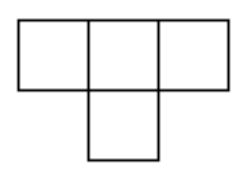Problems
A magic square is a square filled with numbers, one in each cell, in such a way that the sums of the numbers in each row, each column and along each of the two main diagonals are the same. The value of this sum is known as the magic constant of the square. Show that in any \(4 \times 4\) magic square (which contains \(16\) numbers) the sum of all the numbers in the \(4\) central squares is also equal to the magic constant of the square.
Show that for any natural number \(n\geq 1\), the number \[n^4+4n^2+9\] is not a perfect square.
There are \(12\) light bulbs placed on top of the numbers on a clock face. Initially, only the bulb at \(12\) is on. We can choose any \(6\) consecutive bulbs and change their state simultaneously, that is, if any were on, we turn them off, if any were off, we turn them on. Can we perform this operation multiple times so that in the end only the bulb at \(11\) is on?
A group of schoolboys are going to walk down a narrow path in a straight line, one behind the other. There are \(11\) boys, and among them are Will, Tom, and Alex. If exactly two of them walk directly next to each other, they will start arguing. But if the three of them are all next to each other, in any order, the third one will always break the argument of the other two. We don’t want any arguments to persist. How many ways are there to order all \(11\) boys?
For a natural number \(n\) consider a regular \(2n\)-gon, with every vertex coloured either blue or green. It is known that the number of blue vertices equals the number of green vertices. Show that the number of main diagonals (passing through the centre of the \(2n\)-gon) with both ends blue is the same as the number of main diagonals with both ends green.
Jess and Tess are playing a game colouring points on a blank plane. Jess is moving first, she picks a non-colored point on a plane and colours it red. Then Tess makes a move, she picks \(2022\) colourless points on the plane and colours them all green. Jess then moves again, and they take turns. Jess wins if she manages to create a red equilateral triangle on the plane, Tess is trying to prevent that from happening. Will Jess always eventually win?
Can you cover a \(10 \times 10\) board using only \(T\)-shaped tetrominos?

Can you cover a \(10 \times 10\) square with \(1 \times 4\) rectangles?
Two opposite corners were removed from an \(8 \times 8\) chessboard. Is it possible to cover this chessboard with \(1 \times 2\) rectangular blocks?
One unit square of a \(10 \times 10\) square board was removed. Is it possible to cover the rest of it with \(3\)-square \(L\)-shaped blocks?
